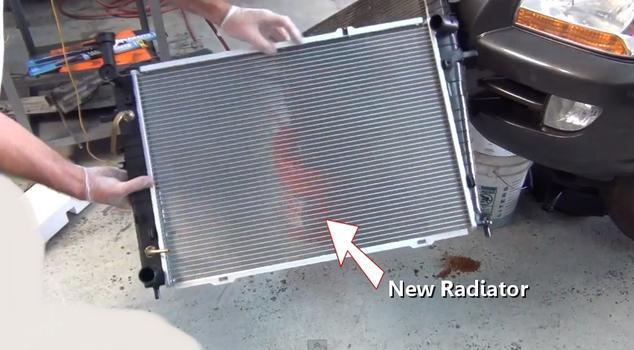One way that can help you to determine if your water pump is not working right is by squeezing the upper hose (engine at idle) when the engine is hot (before it starts overheating though); rev the engine and feel how much coolant goes thru the hose. If you can't feel too much coolant, you could have a bad pump (but not necessarily). With the engine off, you can also try to move the pump. If it wobbles, it's bad and need replacement.
Now, to fill you cooling system, do it with a cold engine and the car off. If you feel like you have air in your system, raise the front of your car so that your radiator cap is the highest point of your cooling system. Top off the radiator and bring the level at 'cold' in the overflow tank. If your level of coolant is too low in this tank, your system will suck in air from the tank instead of coolant which will lead to your car overheating.
Now with the bleeder screws open, turn on the car and let it run with the radiator cap off. Try to squeeze your hose a little bit to get the air out.
The coolant in your radiator should rise slowly to the point where it will start spilling. Put the cap back on.
When coolant starts flowing out of the bleeder screws, tighten them (the bleeder screw close to your water pump should start bleeding coolant pretty quickly after you turn on your car, but it may take longer for the one by the thermostat housing).
Turn the car off, let it cool completely and recheck the level in the overflow tank. If too low add coolant in the tank.
When your engine is cold, your level of coolant in your radiator should be anywhere from the base of the neck to the top of the neck, and your level in the tank should be at least at the 'cold' mark or in between cold and warm. If it's not your case, add coolant to the right level and check for leaks.
If you're absolutely sure that the thermostat, fans, radiator, hoses, radiator cap and water pump are good, that leaves the following possibilities:
-glogged water jacket (debris from the cooling system have accumulated on the wall reducing heat conductivity and/or flow of coolant.)
-leaks (internal or external). An internal leak would likely be a headgasket or crack in the head or engine block.
You should also check your oil and transmission fluid to make sure no coolant is mixed with them. If you have coolant in your transmission fluid, you have a leak in your radiator. If coolant in oil, you have an internal leak. Either way, it's not good.
-loose serpentine belt. Check your belt tension and your belt tensioner (the spring in your tensioner may be too weak and the tensioner need replacement).
-Have you checked your coolant and made sure it's the right strengh? If your coolant is too 'weak' it will start boiling at lower temperature.
First thing you should do: pressure test your cooling system, and make sure it holds the pressure (something like 15 psi for at least two minutes)
If you have an infrared thermometer, check the temp at the thermostat housing; this should tell you if your engine is really overheating. You could have a bad sensor and your car is actually not overheating.
Also, with an infrared thermometer you could tell if you have clogs in your radiator or hoses.
Check for back pressure.
Look for codes stored in your pcm and check the actual temp sent to your computer.
Friday, September 12th, 2008 AT 3:17 PM


